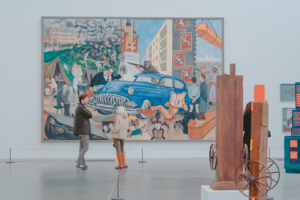Digital Painting Techniques: Bringing Imagination to Life on a Canvas

Digital painting has revolutionized the art world, providing artists with powerful tools to bring their wildest imaginations to life on a virtual canvas. This form of artistic expression combines traditional painting methods with cutting-edge technology, offering a limitless playground for creativity.
One of the key advantages of digital painting is the flexibility it offers. Traditional mediums often come with limitations, such as the irreversible nature of mistakes or the need for various materials. In the digital realm, artists can experiment freely, undo mistakes, and explore diverse styles without the constraints of physical resources. This adaptability has led to a surge in artistic experimentation, pushing the boundaries of what is visually possible.
The foundation of digital painting lies in the use of graphic tablets and styluses, which have become the modern-day brushes and palettes. These tools provide artists with pressure sensitivity and precise control, allowing for the recreation of the subtle nuances found in traditional painting. The ability to control brush size, opacity, and texture opens up a world of possibilities, enabling artists to replicate the feel of oils, watercolors, or even charcoal with astonishing accuracy.
Layers are another game-changing feature in digital painting. Artists can work on different elements of a piece independently, making adjustments without affecting the entire composition. This method enhances efficiency, as artists can focus on specific details or experiment with various elements without compromising the entire artwork.
Digital painting software plays a pivotal role in shaping the final outcome. Industry-standard programs such as Adobe Photoshop, Corel Painter, and Procreate provide a vast array of brushes, textures, and effects. These tools allow artists to experiment with different styles, from hyper-realistic portraits to abstract compositions. The ability to work with layers, masks, and blending modes adds depth and complexity to digital artworks.
Moreover, the digital medium opens doors to collaborative projects and global artistic communities. Artists can share their work online, receive feedback, and engage in dialogue with a diverse audience. This interconnectedness fosters inspiration and growth within the digital art community.
As technology continues to advance, so do the possibilities within digital painting. Virtual reality (VR) painting, for example, enables artists to immerse themselves in a three-dimensional canvas, creating art in an entirely new dimension. The fusion of technology and artistry in digital painting continues to shape the future of visual expression.
In conclusion, digital painting has evolved into a dynamic and influential form of artistic expression. The marriage of traditional techniques with modern technology provides artists with unparalleled creative freedom. From the flexibility of undoing mistakes to the vast array of tools and software available, digital painting has become a cornerstone in the world of contemporary art, allowing artists to bring their imaginations to life on a canvas without boundaries.